I've written a number of posts over the years about garbage (
here and
here, for instance).
It's my idea that preschools ought not use stuff as much as finish using stuff. It's a cliche to scold that kids these days have more toys than necessary, but they do, and everyone knows it, even the people buying the toys for them. My own child did and so do most of the kids at Woodland Park.
 |
| We acquired a collection of 30 or so VHS and cassette tapes, old sales and marketing materials mostly, refuse from someone's spring cleaning. |
I don't begrudge any child their favorite toy, and I've deposited many wonderful toy stories in my own memory bank. Still, toys are largely unnecessary. It's just as possible, perhaps more so, to enjoy a rich, fully engrossing, even exhilarating play experience with garbage than with toys manufactured with obsolescence built into them, a time sometimes measured out in mere months, weeks, or even days.
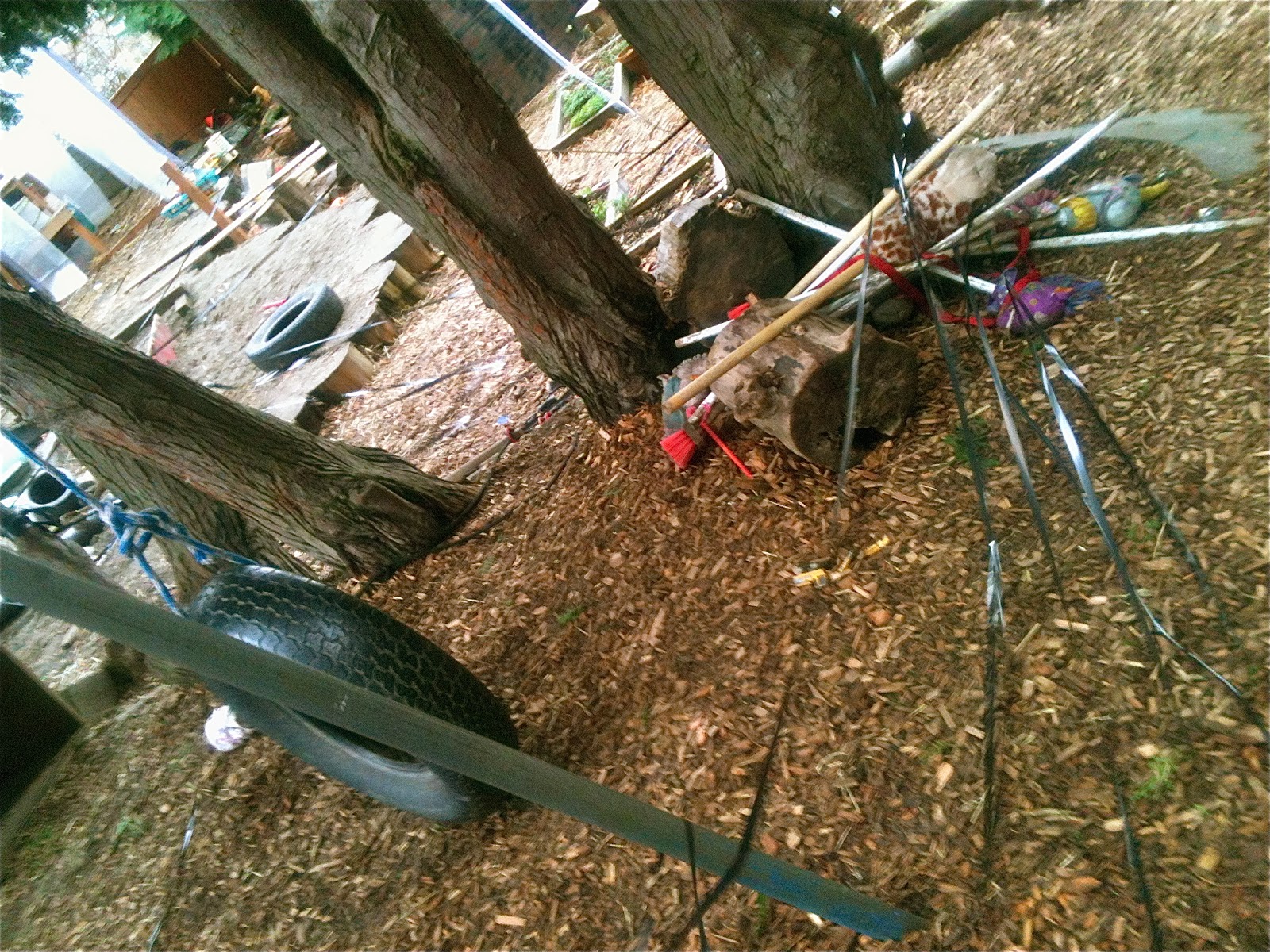 |
| If you look carefully, you'll notice that these tape cartridges are held together with tiny Phillips head screws, the removal of which is a perfect project for children learning to use screwdrivers. |
I say this ought to be considered one of the primary functions of preschools: to use things one more time before they head to the recycling center or landfill.
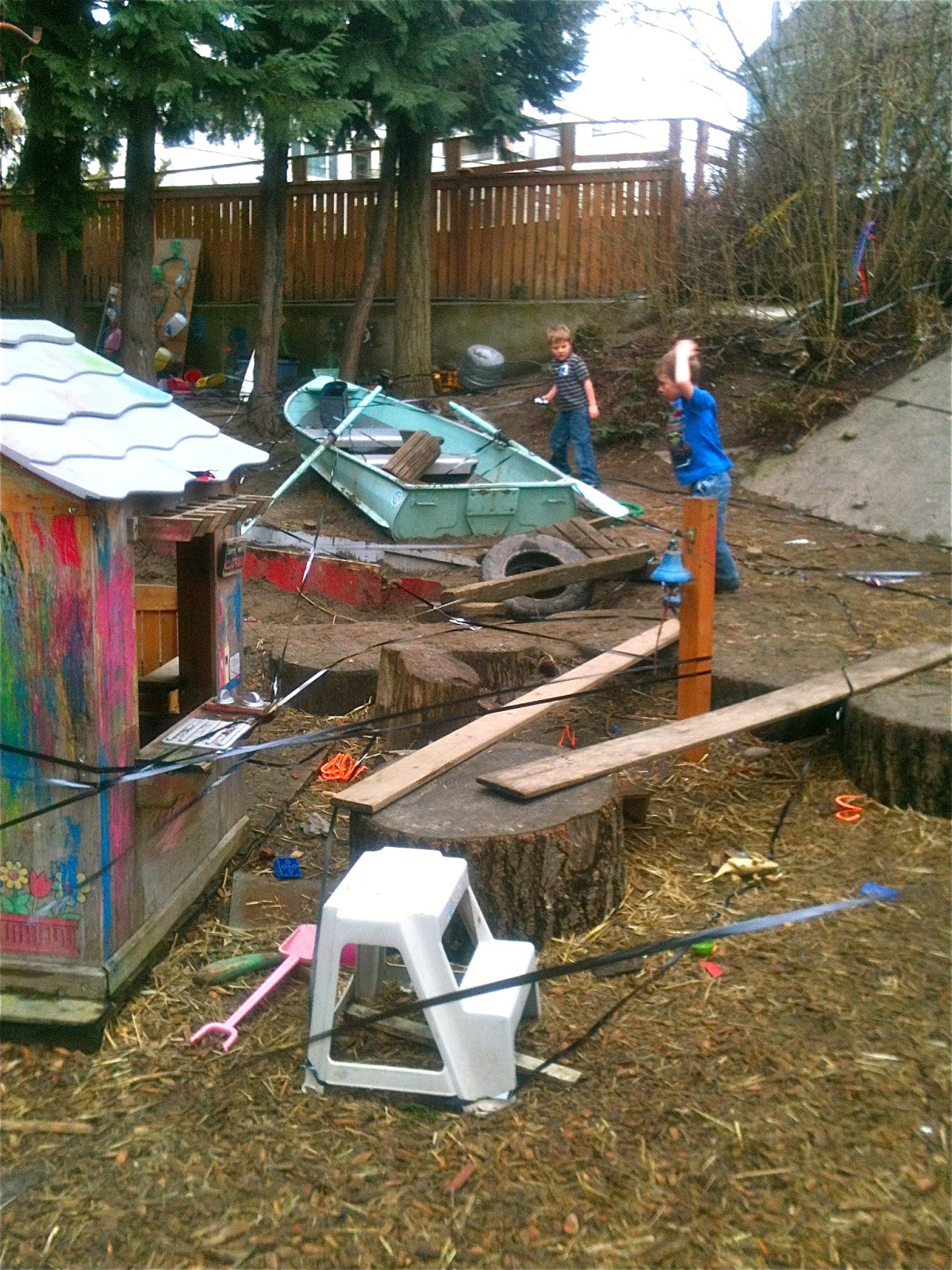 |
| Inside the boxes we found spools and spools of fluttery, shiny tape, which we of course unfurled. For two days we did this, wrapping our outdoor space in a maze of the stuff, transforming the place. |
People often ask me if I can "use" this or that. My standard answer is that we can use anything if you have "a lot," a calculation that normally kicks in at around 25. There are, of course, the preschool classics: paper towel and toilet paper tubes, egg cartons, milk jugs, and baby food jars, regular grocery refuse, but that's just scratching the surface.
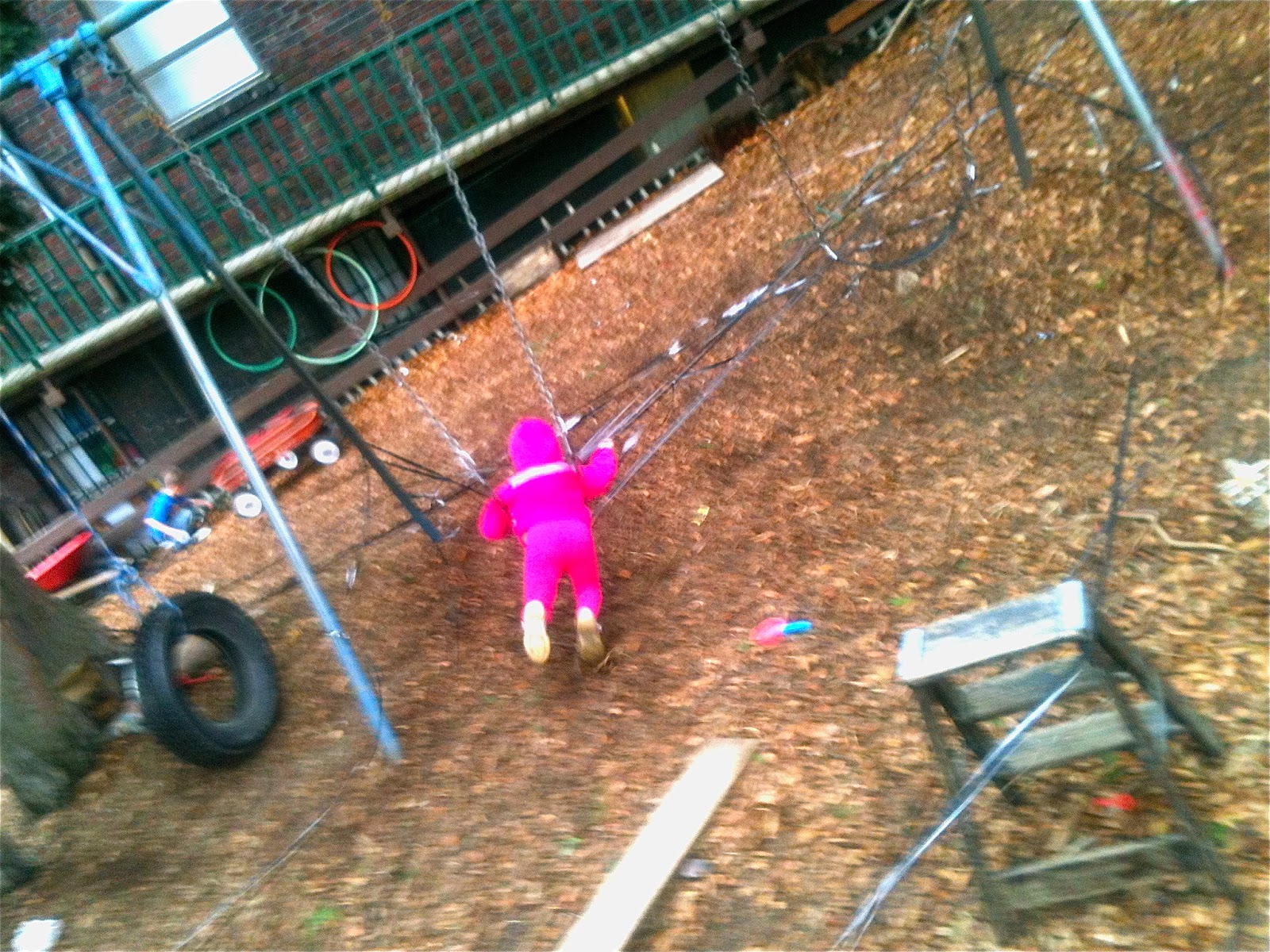 |
| It's hard to really see in these photos, but it got to the point that it was almost impossible to walk. The girl in this picture is attempting to swing through the stuff. That's when we brought out the scissors and cut it all down, collecting it to be used for the "last time" yet again. At the end of the week, on the third day of playing with this garbage, we broke out the glue guns and created art from the boxes, empty spools, and even the tiny screws we'd removed with our screwdrivers. |
Over the years we've "scavenged" from construction sites, frame shops, yard waste, and factory dumpsters. We've acquired curriculum supplies in the form of bankruptcy merchandise, clean industrial waste, and people's private stashes of tins and containers and fabric and party supplies. We count on our families, both current and alumni, to think of us when they're cleaning out their garages or basements.
I like this vision for preschools for purposes of waste-not-want-not conservation alone, but it goes beyond that. Garbage is largely comprised of relics from the real world in which we, and our children, live. The fundamental purpose of education in any society is give children the opportunity to practice the skills and gain the knowledge they need to function in that society, and what better way to provide direct hands-on experience than to play with the real stuff of our day-to-day lives?
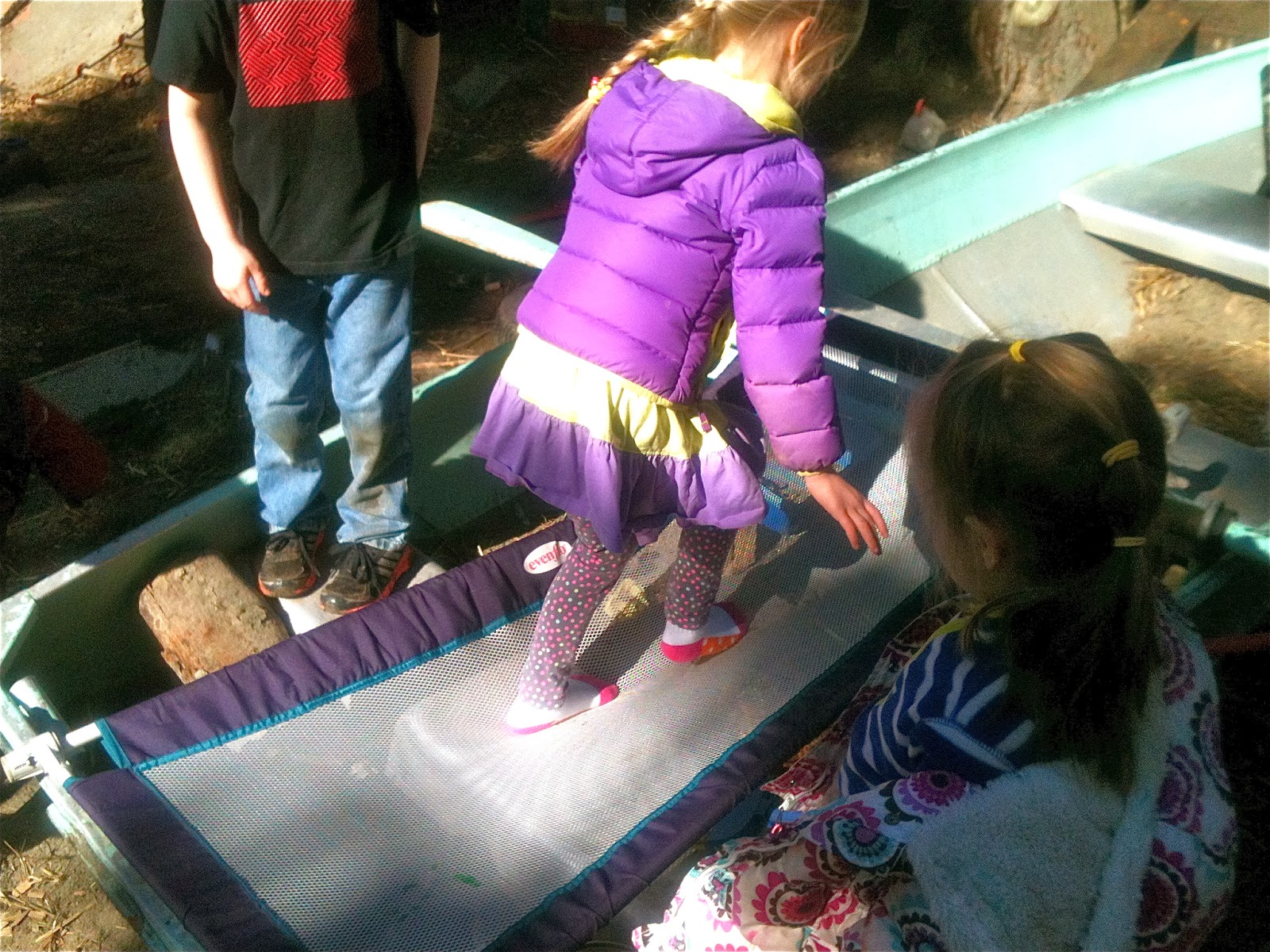 |
| This was one of the hallway barriers that we use to discourage toddlers from wandering off into other parts of the building. The top bar became bent to the point that it can no longer serve its purpose. I brought it outdoors with me, saying, "I'm going to throw this away unless you guys can think of something better to do with it." |
We've all witnessed the "box it came in" phenomenon, whereby the packaging has better play value than the toy. Garbage is very often what children choose over the market-tested plastic fantastic features and colors of the toy from inside, and it is always what they choose in the long-run once the limited and limiting toys have been exhausted in favor of the limitless potential of garbage.
 |
| They did find something better to do, converting it into a hammock. |
Of course, those who see childhood and schools as a profit center won't like this one bit. Heaven forbid we stop buying their over-priced, pre-packaged curricula, consulting services, and "educational" toys. It's an era of belt-tightening, don't you know, a time for getting the most bang for the buck and garbage is both better and cheaper than the garbage they're peddling.
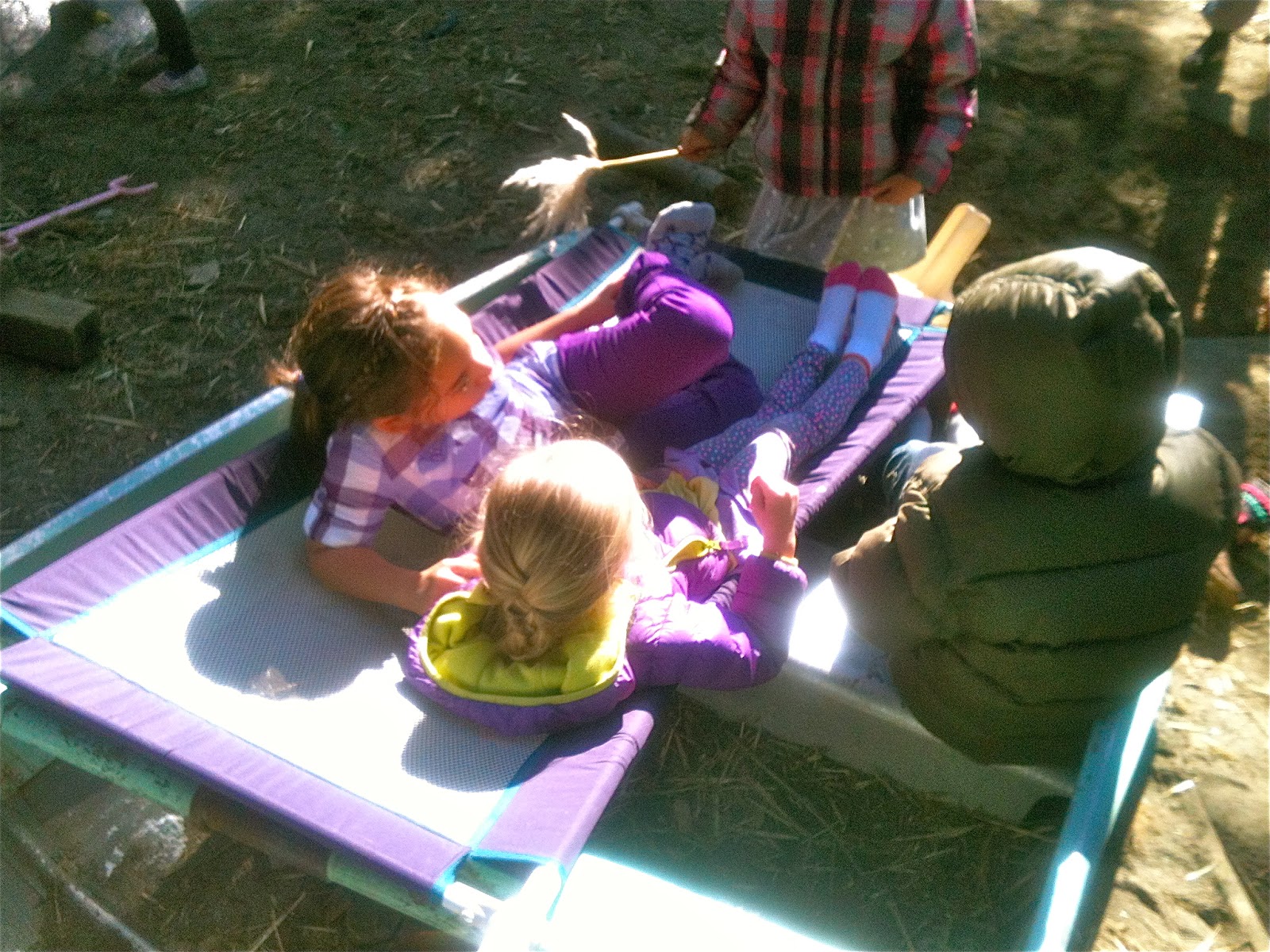 |
| We made a place to hang out with our friends on a cool, but sunny day. When I later asked if they were ready for me to take it to the dumpster, one girl answered, "We should keep it for a few more days, just in case we need it." Last I saw it, a group of boys were piling sand on it, using it as a sieve. |
As props in dramatic play, material for artistic, constructive or scientific expression, or used for inventing something entirely new under the sun, garbage and other free stuff is not just the practical, cost-effective choice, but also the pedagogically better one: not stuff to use, but rather stuff to finish using.
I put a lot of time and effort into this blog. If you'd like to support me please consider a small contribution to the cause. Thank you!
1 comment:
I have been trying to find places to take my 'stuff' for ages - empty ribbon rolls, wrapping paper tubes, tape centers, scraps of ribbon and silk flowers....wishing you were closer! Well done!
Post a Comment